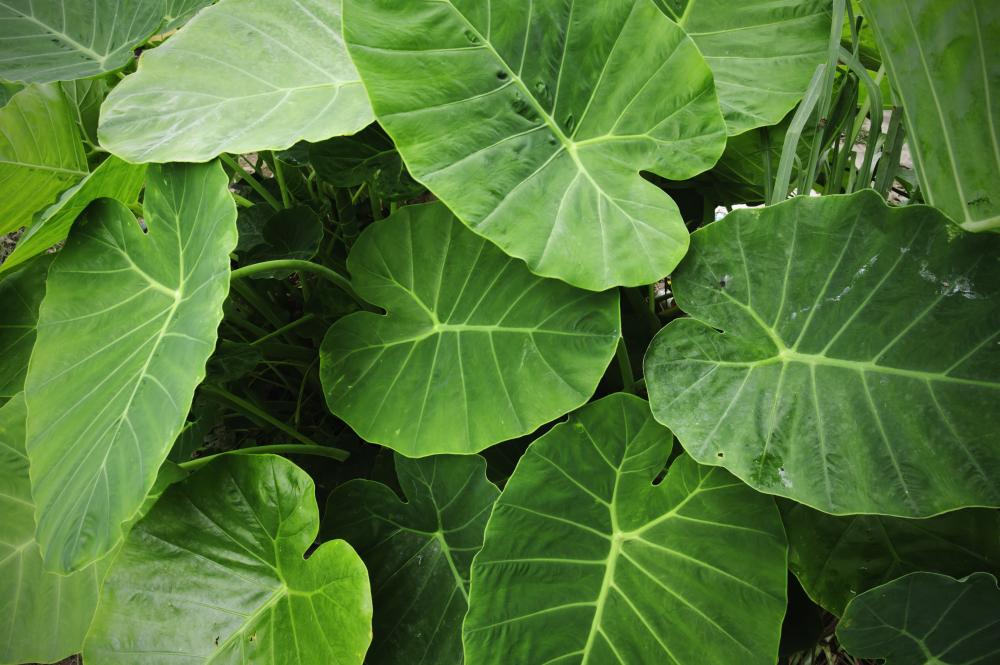Elephant ear plants (Colocasia esculenta) are stunning tropical specimens prized for their gigantic heart-shaped leaves But these beauties aren’t problem-free Elephant ears are susceptible to several issues that can mar their appearance or even kill the plant if left unchecked,
By learning to recognize and treat the most common elephant ear plant problems, you can keep your specimen thriving for years of enjoyment.
Watering Problems
Elephant ears need consistent moisture but can suffer if overwatered. Two key problems arise from improper watering:
Root Rot – Excessive watering leads to soggy soil and suffocated roots. Fungi like pythium attack causing rotten roots that spread to the plant’s base. Leaves yellow, wilt and the plant collapses.
Drought stress – Underwatering leaves the plant unable to transport moisture. Leaves dry out curl up, turn brown or show scorched edges and die back.
Fix: Water elephant ears when the top few inches of soil become dry. Ensure pots have drainage holes. Let excess water drain fully after watering.
Pests
Elephant ears are vulnerable to two common sap-sucking insect pests:
Spider mites – Tiny pests that produce webs and stippling damage on leaves.
Mealybugs – Fluffy white insects that cluster on stems and leaf joints.
Fix: Hose plants down to dislodge pests. Apply insecticidal soap or neem oil as needed. Release ladybugs to eat pests. Improve air circulation.
Diseases
Several fungal diseases infect elephant ear foliage:
Leaf blight – Round, wet lesions on leaves which then dry and shrivel. Fuzzy grey growth sometimes present on lesions.
Leaf spot – Small brown spots with yellow halos appear on leaves, eventually causing holes.
Fix: Improve airflow. Avoid overhead watering. Apply copper fungicide spray weekly in rainy periods or every other week when drier. Remove diseased leaves promptly.
Sunburn
Intense sunlight scorches elephant ear leaves, causing:
- Brown, crispy leaf edges and tips
- Dry, brown patches on leaves
- Wilted, browned overall appearance
Fix: Move plant to a shaded location. Filter sunlight with curtains or shade cloth. Mist leaves during heat waves.
Nutrient Deficiencies
Lack of key nutrients causes elephant ear problems:
Stunted growth – Indicates nitrogen deficiency. Leaves are smaller and spindly.
Pale leaves – Chlorosis signaling low iron, magnesium, manganese or zinc.
Fix: Fertilize monthly during growth with a balanced liquid fertilizer. Add compost and organic matter to soil.
Corm Rots
Two below-ground rots threaten elephant ears:
Root rot – Excessive soil moisture causes roots to rot. Leaves yellow and wilt before the plant collapses.
Corm rot – Water-soaked lesions expand on the corm at soil level, killing the plant.
Fix: Improve drainage. Allow soil to dry between waterings. Discard damaged corms; do not try to save them.
Physical Damage
Physical injury to leaves or corms opens the door to rots:
Split leaves – Large leaves easily tear in wind or rain. These damaged areas are prone to fungal infection.
Corm nicks – Careless digging can nick or cut the corm, allowing decay organisms entry.
Fix: Stake plants to minimize wind damage. Remove tattered leaves. Carefully dig corms when transplanting to avoid injury.
With proper siting, consistent moisture, and prompt treatment of any problems, elephant ear plants will thrive for many years of outstanding beauty. Their tropical grandeur is well worth the minimal care they require.
5 Elephant Ear Plant Tips To Avoid Issues
FAQ
What does an overwatered elephant’s ear look like?
What are the disadvantages of elephant ear plants?
What’s wrong with my elephant ear?
How to treat sick elephant ear plant?
Why do elephant ear plants wilt?
Wilting is a widespread problem faced by many elephant ear plants; the most common causes are overwatering or underwatering. Overwatering will cause leaves to wilt and turn yellow quickly. This happens because the roots become suffocated and cannot provide enough moisture and nutrients to the leaves.
Why do elephant ear plants die?
One of elephant ear plants’ most common causes of death is overwatering. Elephant ear plants are native to tropical climates and cannot tolerate excessive amounts of water. When an elephant ear plant is overwatered, the roots cannot access the oxygen they need to function properly. This can lead to root rot, which can eventually kill the plant.
Why is my Elephant ear not growing?
Waterlogged soil leads to root rot. Hold off watering and allow the top 2 inches of the soil to dry out between waterings. Another frequent growing problem that you might encounter with the elephant ear is that the plant just stops growing. This is not just about stunted leaves or short stems.
Are elephant ear plants dangerous?
Elephant ear plants, also known as Alocasia and Colocasia, are tropical plants that add a touch of exotic beauty to any garden. They have large, heart-shaped leaves that can grow up to three feet long and wide. However, like any other plant, elephant ear plants are susceptible to diseases that can damage or even kill them.
- A Complete Guide to Caring for Yuki Cherry Blossom Shrub - January 23, 2025
- Identifying Red Hot Poker Seeds: What to Look For When Harvesting Torch Lily Pods - January 23, 2025
- A Complete Guide to Harvesting Evening Primrose Seeds - January 23, 2025

